Annotated by GM Alexander Kalinin
The starting day of the tournament saw rating favorites meeting with less famous participants. No especial surprises have happened as the stronger players won most of the games.
The doctor wouldn't be happy
Dear readers please don't worry! It's not about any medical problems - I hope there will be no such issues at the Moscow Open.
KHISMATULLIN, Denis (RUS) - NYUDLEEV, Dolgan (RUS)
Cup of Russia Stage
1.Nf3 Nf6 2.g3 g6 3.Bg2 Bg7 4.0–0 0–0 5.c4 c6 6.b3 Ne4 7.d4 d5 8.Bb2 Nd7 9.Nbd2
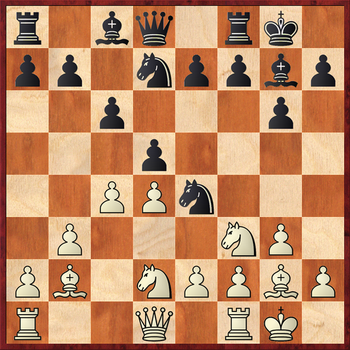
9...Nxd2
Doctor Siegbert Tarrasch wouldn't be satisfied with this decision: “The knight that made three moves is exchanged for the knight that made only one move!" Even though he didn't always follow his own dogmas in his games, in this case 9...Ndf6 would be better.
10.Qxd2 dxc4 11.bxc4 e5
Of course, this operation was the idea of the 9th move, but the fact is that first Black lagged behind in development and then he opened the position himself.
12.Rfd1
In A.Ponfilenok- V.Yandemirov game (Togliatti 2007) White played simply 12.dxe5 Nxe5 13.Qxd8 Nxf3+ 14.Bxf3 Rxd8 15.Bxg7 Kxg7 with easy play for Black.
12...exd4 13.Nxd4 Qc7 14.Rab1 Re8
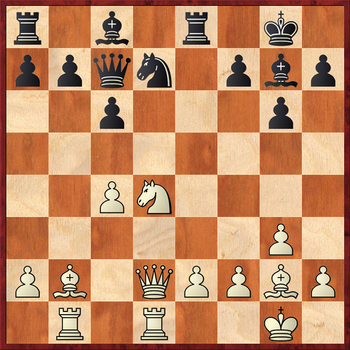
15.Qb4!
We can’t prove that this is the strongest move but it gives the game the necessary creative tension! The queen has stopped the d7-knight from coming to c5, it's also pressing the b7-pawn and is ready to support the advance c4-c5. But the most important thing is that the queen maneuver creates the ground for tactical fantasy. The first motiff is clear enough - 15...c5? 16.Nb5!, but there’s one more complicated task.
15…a6
Black prepares c4-c5, but its queen’s flank becomes weaker. It makes sense to play 15...Nf6, but finding next good moves would be more difficult.
White's deepest idea was 15...Bxd4 16.Rxd4 c5 17.Re4!! (in case of 17.Rxd7 Qxd7 18.Qc3 Qd4 Black manages to hold) 17...Rxe4 (17...cxb4 18.Rxe8+ Nf8 19.Rd1 loses) 18.Qc3 Re5 19.f4 f6 20.fxe5 Nxe5 21.Bd5+ Kg7 22.Qe3 Rb8 23.Rf1. At first computer thinks that Black can hold equality, but from the human point of view Black’s position is too loose.
16.c5 a5 17.Qc3 Qe5 18.Rdc1 Bf8
It’s not an easy task for Black to finish his development. In case of 18...Nf6 there is 19.Nxc6! Qxc3 20.Bxc3 bxc6 21.Bxc6 Bf5 22.Rb2 with clear advantage of White.
19.Qd2 Qc7?
This allows a quick leap of the white knight.
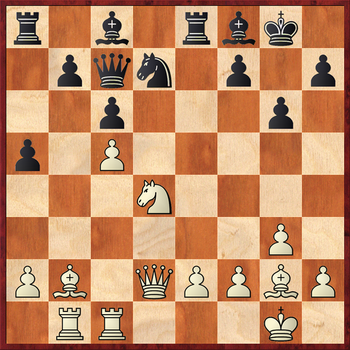
20.Nf5! Ne5 21.Nd6
White pieces have conquered all important points. The battle’s result is clear.
21… Re7 22.f4 Ng4 23.Qd4 f6 24.h3 Ne3 25.Be4 Nd5 26.Bxd5+ cxd5 27.Qxf6 Bg7 28.Qg5 Rxe2 29.Bxg7 Kxg7 30.Rb2! Re3
In case of 30...Qe7 White wins nicely by 31.Rxb7! Bxb7 32.Nf5+, while if 30...Rxb2 then 31.Ne8+
31.f5 Qe7

The a8-rook is offside and all white pieces rush at the black king.
32.f6+! Qxf6 33.Qxe3 Qxb2 34.Qe7+ Kh6 35.Nf7+ Kg7 36.Ng5+ Kh6 37.Qxh7+! Kxg5 38.Qh4+ Kf5 39.Qf4+ Ke6 40.Re1+ 1–0
In honor of Paul Keres
On January 17 this year, the chess community celebrated 100th anniversary of Paul Keres birth. In the next game White chose one of the opening setups favored by the outstanding Estonian grandmaster.
GRACHEV, Boris (RUS) - MIKHAILOV, Viacheslav (RUS)
Tournament A, 31.01.2016
1.d4 Nf6 2.c4 e6 3.Nf3 b6 4.e3 Bb7 5.Bd3 Bb4+ 6.Nbd2 0–0 7.0–0 d5 8.a3 Bd6
The game P.Keres – A.Beliavsky (Championship of USSR, Moscow 1973) developed in the following way: 8...Be7 9.b4 c5 10.bxc5 bxc5 11.cxd5 cxd4 12.e4! exd5 13.e5 Ne4 14.Nxd4 Nd7 15.N2f3 Re8 16.e6! fxe6 17.Nxe6 Qb6 18.Nfg5 Bxg5 19.Nxg5 Ndc5 20.Rb1 Qc7 21.Nxe4 Nxe4 22.Bb2 Rad8 23.Bd4 Bc8 24.Re1 Qa5 25.Re3 Ba6 26.Qg4 Re7 27.Bxg7! Rxg7 28.Qe6+ Rf7 29.Bxa6 Qd2 30.Be2 , and White won soon.
9.b4 dxc4
Black relieves the pawn tension in the center hoping to replace it by the piece pressure.
10.Nxc4
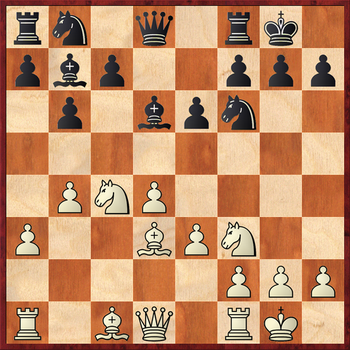
10...Ne4?!
This move is too straightforward. It would be more flexible to finish the development by 10...Nbd7, for example: 11.Bb2 Ne4 12.Qc2 f5 13.Rfe1 Qe8 14.Nce5 Ndf6 15.Nd2 Rd8 16.f3 Nxd2 17.Qxd2 Qh5 with mutual chances, Y.Balashov – O.Romanishin (Rostov 1980).
11.Nfe5 f5 12.f3 Nf6 13.Qe2 Be7?
Black forgot about the control over the e5-square. 13...Nbd7 was necessary again.
14.Bb2 Nbd7 15.e4 g6 16.exf5 exf5
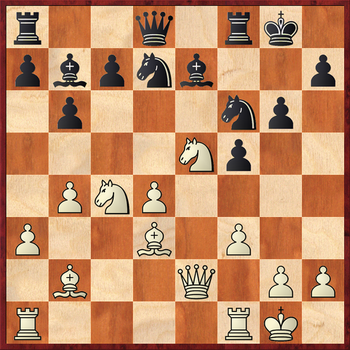
Black has too many weak squares, and there is no surprise that White has a little combination, which destroys the opponent's control over the center.
17.Nc6! Bxc6 18.Qe6+ Kg7 19.Qxc6 Rc8 20.d5 Nb8 21.Qe6 Re8
White queen is deep inside the Black's camp and Black wants to catch it.
22.Rae1
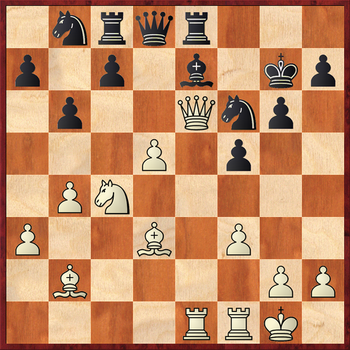
22...Nbd7
Black could win the white queen indeed but the result would be unpleasant for him: 22...Bc5+ 23.bxc5 Rxe6 24.Rxe6 Qxd5 25.Rxf6 and White wins.
The Black’s position is also difficult in case of 22...Bd6 23.Qxe8 Qxe8 24.Nxd6 cxd6 25.Rxe8 Rxe8 26.Rc1, though it’s «the lesser evil» .
23.Qc6 Nb8 24.Qb7 Kf8
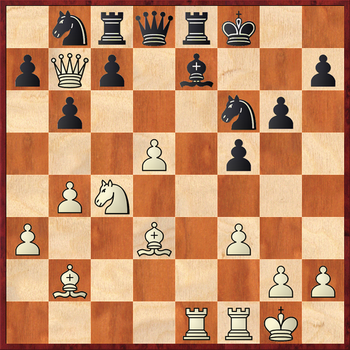
25.d6!
The final breakthrough!
25…cxd6
After 25...Bxd6 26.Bc2, with the bishop coming to b3, the black king would't live long.
26.Bxf6 Bxf6 27.Rxe8+ Kxe8 28.Qxc8 Qxc8 29.Nxd6+ Kd8 30.Nxc8 Kxc8 31.Rc1+ Kd8 32.Rc2
White realized his extra exchange easily.













